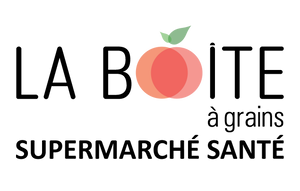This is a bacterial infection that mainly affects women and its symptoms define discomfort in :
- painful, burning urination;
- frequent and often urgent need to urinate;
- blood in the urine;
- lower abdominal pain or cramps;
- shivering;
- foul-smelling or cloudy urine;
- pain during sexual intercourse.
This infection is called a urinary tract infection.
Women are usually more than ten times more affected by UTIs than men. Half of all women experience at least one UTI in their lifetime, and 10% experience at least one such infection in any given year. Over 30% of UTIs recur within six months of incidence, and can be difficult to treat.1.
What are urinary tract infections and what causes them?
Bacterial in nature, urinary tract infections can affect various parts of the urinary tract. They usually infiltrate the urethra (urethritis) and can travel to the bladder (cystitis) and even to the kidneys (pyelonephritis), where they can become a serious health problem.
Escherichia coli (E. coli) is the bacterial strain responsible for 85% of urinary tract infections.2. Due to their shorter urethra and close proximity to the anus, E. coli infections in the urinary tract are more likely to occur in women. E. coli are common bacteria normally found in the intestine, but they are highly undesirable in the urinary tract, where they can multiply rapidly and cause infection. Worse still, the cell walls of E. coli have "sticky" projections that enable the cells to adhere to the bladder mucosa and multiply, making them very difficult to eliminate.
Bacterial strains such as Staphylococcus saprophyticus cause most other urinary tract infections. The presence of yeasts such as Candida albicans is rare in UTIs, but increasing. Risk factors for the incidence of UTIs increase with the frequency and intensity of sexual intercourse, diabetes, pregnancy, menopause, immune system weakness, blockages in the urinary tract, and with the use of harsh skin cleansers, birth control pills, contraceptives and spermicides. Recent information indicates that urinary tract infections can also be contracted by eating contaminated chicken.3.
Medical treatment of urinary tract infections
Doctors usually use antibiotics to treat urinary tract infections after diagnosis through laboratory tests. Antibiotics are effective and, depending on the treatment used, can eliminate the problem within one to ten days. Unfortunately, they may be less effective if the infection recurs, as UTIs can be caused by a variety of bacteria. What's more, overuse of antibiotics can lead to bacterial resistance, reducing their effectiveness in the future. Given that a third of infections are repeated, many women are frustrated at not finding a solution to their UTIs.
Preventing urinary tract infections
Preventing urinary tract infections is the best course of action. There are several simple steps a person can take to reduce the risk of UTIs.
- Drink enough water to flush the urinary tract and dilute urine.
- Don't hold back urination.
- Take a shower instead of a bath (reduced exposure to bacteria).
- Wipe from front to back after urination or bowel movements.
- Wash before and after intercourse and empty the bladder as soon as possible.
- Avoid irritating feminine products such as vaginal injections and powders, which can irritate the urethra.
Natural remedies for urinary tract infections
Another way to prevent and treat urinary tract infections is to use a natural ingredient, or a combination of several, that have been shown to be effective.
Cranberry - Not only is cranberry a popular fruit and juice, it's also the most popular natural ingredient for dealing with urinary tract infections. Cranberries have two essential effects: 1) they acidify urine to reduce bacterial growth; 2) they prevent bacteria from adhering to the mucous membranes of the bladder. Cranberries are considered more effective in preventing urinary tract infections than in treating them.
D-mannose - D-mannose is a simple sugar that many people recognize as useful for urinary tract infections. It works by coating the E. coli bacteria. Being stickier than E. coli, D-mannose prevents bacteria from adhering to bladder mucosa, thus helping to eliminate them. D-mannose is highly recommended by naturopaths, but must still be validated by clinical studies.
Hibiscus extract - West African hibiscus (Hibiscus sabdariffa) has been used for centuries in herbal teas. It has traditionally been used to treat urinary tract infections, menstrual cramps and hypertension, as well as to soothe the respiratory tract and improve skin and hair health (external use).
Hibiscus is rich in natural compoundssuch as anthocyanins, proanthocyanins, polysaccharides and organic acids, which is why the plant has been further studied for its ability to prevent and treat urinary tract infections. In France, a particular patented hibiscus extract, called UTIROSETM, has undergone double-blind human clinical trials to assess its potential.
In the UTIROSETM hibiscus extract study, 90 women aged 18-55 with a history of recurrent urinary tract infections (8 or more infections per year) were evaluated. Over a 24-week period, women taking 200 mg UTIROSETM daily reduced the incidence of urinary tract infections by 77% (versus 20% for women taking placebo)4. These were very promising results, and more positive than any other plant extract previously studied.
Analysis showed that UTIROSETM achieved these results via several modes of action:
1. Inhibition of bacterial flora - Unlike cranberry and D-mannose, UTIROSETM has demonstrated its ability to decontaminate the E. coli and Candida albicans that contribute to urinary tract infections. Studies have shown that UTIROSETM can decontaminate E. coli from media in a single day, thanks to its phenolic compounds.
2. Anti-adherence of E. coli - Like cranberries, UTIROSETM includes anthocyanins, proanthocyanins and flavonoids, which help prevent E. coli bacteria from adhering to bladder walls and help eliminate them.
3. Urine acidification - Like cranberries, hibiscus acts to acidify urine and make it harder for bacteria to proliferate. The addition of UTIROSETM was able to reduce normal urine pH (7.5 to 8.0) to 5.6.
4. Avoidance of germ resistance - Although UTIROSETM is capable of decontaminating bacteria such as E. coli, it does not display the risk associated with the overuse of antibiotics. Overuse of antibiotics can result, over time, in bacterial resistance, leading to increased risk of infection and limited treatment success.
Other improvements enjoyed by patients in the UTIROSETM study were a reduction in pain during urination and in urine odour.
REFERENCES :
1. University of Maryland Medical Center http://www.umm.edu/altmed/articles/urinary-tract-000169.htm.
2. Balch, Phyllis A., Prescription for Nutritional Healing, Avery, 2006, p. 245.
3. www.huffingtonpost.com/2012/02/17/uti-chicken-urinarytract-infection-contaminated-e-coli_n_1285519.html
4. Allaert, F. A., "Prevention of recurrent cystitis in women: double-blind, placebo-controlled study of Hibiscus sabdariffa L. extract", La Lettre de l'Infectiologue - Translation of the original issue - Tome XXV - n° 2 - March-April 2010.
Allaert, F. A., "Prevention of recurrent cystitis in women: double-blind, placebo-controlled study of Hibiscus sabdariffa L. extract", La Lettre de l'Infectiologue - Tome XXV - n° 2 - March-April 2010.


